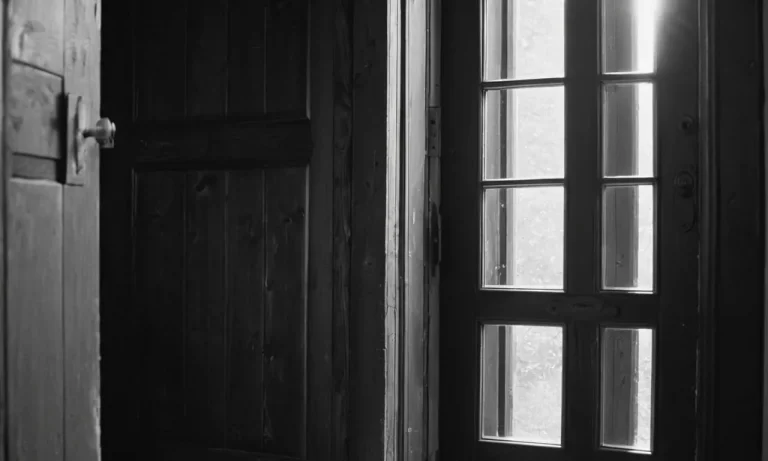Birds have long captured the human imagination, their mysterious presence and behaviors inspiring countless stories, myths, and superstitions across cultures. Black birds, in particular, have accumulated a rich array of symbolic meanings and associations throughout history. If you’ve ever wondered what deeper significance black birds may hold, read on for insights into the legends and lore surrounding these enigmatic creatures.
If you’re short on time, here’s the quick answer to what black birds symbolize: Black birds have traditionally been seen as harbingers of change and transition. They are often considered messengers from the spirit world, particularly in Celtic mythology, and their appearance may signal a time of transformation. More specifically, crows and ravens are commonly viewed as omens of death or bad luck in many cultures, while blackbirds can represent temptation and risk-taking.
Celtic and European Folklore
Celtic and European folklore are rich with fascinating stories and symbolism surrounding black birds, particularly crows, ravens, and blackbirds. These birds have captured the imagination of people for centuries, and their presence in ancient legends and folklore is a testament to their mysterious allure.
Crows and Ravens as Omens
In Celtic and European folklore, crows and ravens are often seen as messengers from the spiritual realm. These birds are associated with death and the afterlife, and their appearance is believed to foretell significant events or deliver messages from the gods. In many cultures, including the ancient Celts, these birds were seen as both harbingers of doom and symbols of wisdom.
For example, in Irish mythology, the goddess Morrigan is often depicted as a crow or a raven. She is associated with war and fate, and her presence on the battlefield was believed to signal impending death. In Norse mythology, the god Odin was accompanied by a pair of ravens, Huginn and Muninn, who would bring him news from all corners of the world.
While these birds are often associated with dark and ominous omens, they are also revered for their intelligence and resourcefulness. In fact, crows and ravens are considered some of the smartest animals on the planet, capable of problem-solving and even using tools. Their cleverness has earned them a place of respect and admiration in many folklore traditions.
Blackbirds and New Beginnings
In Celtic and European folklore, blackbirds are often seen as symbols of transformation and new beginnings. Their dark plumage is associated with the mysteries of the night and the unseen realms, but it is also a symbol of rebirth and renewal.
In Celtic mythology, the blackbird is associated with the Otherworld, a realm of magic and enchantment. It is believed that blackbirds have the ability to travel between worlds and carry messages from the Otherworld to the mortal realm. This connection to the supernatural has led to blackbirds being seen as messengers of change and heralds of new opportunities.
Furthermore, the song of a blackbird is said to bring joy and good fortune. In many cultures, the blackbird’s melodious voice is seen as a sign of positive things to come. Its beautiful song is believed to lift spirits and bring a sense of hope and optimism.
Native American Culture
The Native American culture is rich with symbolism and legends, and black birds, particularly ravens and crows, hold a significant place in their folklore. These birds are often associated with powerful and mysterious qualities, representing both creation and mischief. Let’s explore the deeper meanings behind these fascinating creatures in Native American culture.
Ravens as Creators and Tricksters
In Native American culture, ravens are often seen as creators and tricksters. They are believed to possess great intelligence and are often associated with transformation and change. The Haida people of the Pacific Northwest have a legend that tells of how Raven stole the sun and brought light to the world. This highlights the raven’s cleverness and ability to bring about positive change.
Additionally, the raven is often seen as a mischievous and playful character. Many tribes believe that the raven enjoys playing tricks on humans and other animals. For example, the Tlingit people share a story of Raven stealing a clamshell full of water to create rivers and lakes, causing chaos and confusion. This playful and mischievous nature of the raven is often seen as a reminder to not take life too seriously and to always be open to unexpected possibilities.
Crows as Keepers of Sacred Law
Crows, on the other hand, are often associated with sacred law and the spiritual world in Native American culture. Many tribes believe that crows have the ability to communicate with the spirit realm and act as messengers between the physical and spiritual worlds. They are seen as wise and knowledgeable beings, carrying important messages from the divine.
For example, the Lakota Sioux people believe that crows possess the power to guide lost souls to the spirit world. They are seen as protectors and guides, ensuring that souls find their way home. This belief reflects the deep spiritual connection that Native Americans have with nature and their reverence for all living beings.
The symbolism and legends surrounding black birds in Native American culture are a testament to the profound connection that indigenous cultures have with the natural world. These stories serve as reminders of the power and wisdom that can be found in the smallest and most unexpected of creatures.
Dream Interpretation
Dreams have long fascinated and puzzled humans, and throughout history, people have sought to interpret their hidden meanings. One common symbol that often appears in dreams is the black bird. These mysterious creatures have a rich symbolism that can provide insight into the dreamer’s subconscious mind.
Death and Transition
In many cultures, black birds, such as crows or ravens, are associated with death and transition. Seeing a black bird in a dream might indicate a significant change or transformation taking place in your life. It could be a signal that you are going through a period of transition, letting go of the old and embracing the new. This symbolism can be traced back to ancient beliefs and myths, where black birds were often seen as messengers between the earthly realm and the afterlife.
According to Carl Jung, a renowned psychologist, black birds in dreams can represent the shadow self or the unconscious aspects of our personality. They might symbolize repressed emotions or hidden desires that are trying to come to the surface. Jung believed that exploring these symbols in dreams could help individuals gain a deeper understanding of themselves and their inner conflicts.
Caution Against Temptation
In some dream interpretations, black birds are seen as a warning sign, cautioning the dreamer against temptation or negative influences. They might be a reminder to stay vigilant and avoid making impulsive decisions or getting involved in harmful situations. This interpretation aligns with the common association of black birds with darkness, mystery, and the unknown.
It is important to note that dream interpretation is highly subjective, and the meaning of symbols can vary depending on personal experiences and cultural backgrounds. While some may perceive black birds in dreams as negative omens, others might see them as symbols of wisdom, intuition, or even good luck. The interpretation ultimately depends on the individual’s unique perspective and emotional state.
To delve deeper into the symbolism of black birds in dreams, it can be helpful to keep a dream journal and reflect on the emotions and events surrounding the dream. Exploring the personal significance of these symbols can provide valuable insights and guidance on one’s journey of self-discovery.
For more information on dream interpretation and symbolism, you can visit reputable websites such as Dream Moods or Psychology Today.
Biblical and Christian Symbolism
Black birds have long held symbolic meanings in various cultures and religions, and the Bible is no exception. In both the Old and New Testaments, black birds are mentioned and carry significant symbolism.
Ravens in the Old Testament
In the Old Testament, ravens are mentioned several times and are associated with powerful symbolism. One of the most well-known references is in the story of Noah’s Ark, where a raven is sent out to find land after the flood. The raven’s return with no news of land is often interpreted as a symbol of God’s judgment and the ongoing chaos during the flood.
Ravens are also mentioned in the book of Psalms, where they are portrayed as creatures that rely on God for sustenance. In Psalm 147:9, it is written, “He provides food for the cattle and for the young ravens when they call.” This verse highlights the idea that God cares for all creatures, including the lowly ravens.
Blackbirds in the New Testament
In the New Testament, blackbirds are associated with powerful symbolism as well. One prominent mention is in the book of Luke, where Jesus tells his disciples not to worry about their material needs, using blackbirds as an example. In Luke 12:24, Jesus says, “Consider the ravens: they do not sow or reap, they have no storeroom or barn; yet God feeds them. And how much more valuable you are than birds!” This verse serves as a reminder that God will provide for his followers, just as he provides for the blackbirds.
Another mention of blackbirds in the New Testament is found in the story of the Apostle Peter’s denial of Jesus. Before the rooster crows, Jesus predicts that Peter will deny him three times. This prediction is often associated with blackbirds, specifically rooks or crows, which are black birds known for their loud cries. The crowing of the rooster symbolizes Peter’s betrayal and serves as a reminder of the consequences of denying one’s faith.
These biblical references to black birds, specifically ravens and blackbirds, carry deep symbolic meanings. They remind believers of God’s provision, judgment, and the consequences of denying one’s faith. The use of black birds in these stories serves to emphasize important lessons and teachings found within the Bible.
Symbolism in Mythology and Literature
Throughout history, black birds have held significant symbolism in various mythologies and literary works. They are often associated with mystery, magic, and omens, captivating the imaginations of writers and readers alike. Let’s explore the rich symbolism of black birds in Greek and Norse mythology, as well as their portrayal in the works of renowned authors such as Edgar Allan Poe and Charles Dickens.
Greek and Norse Mythology
In Greek mythology, black birds were often seen as messengers of the gods. The most famous example is the raven, which was associated with the god Apollo. According to the myth, Apollo sent a white raven to fetch water, but the bird got distracted and turned black due to a delay. This transformation led to the belief that black ravens were once white, serving as a symbol of divine intervention and transformation.
In Norse mythology, the raven was also highly revered. The god Odin had two ravens, Huginn and Muninn, who would fly across the world and bring back information to him. These ravens became symbols of wisdom and knowledge, representing Odin’s all-seeing and all-knowing nature. The presence of black birds in Norse mythology often signified the presence of the divine and the supernatural.
Edgar Allan Poe and Charles Dickens
Black birds have made a significant impact in literature, particularly in the works of Edgar Allan Poe and Charles Dickens. In Poe’s famous poem, “The Raven,” the black bird symbolizes death and mourning. The repeated refrain of “nevermore” adds to the eerie and melancholic atmosphere, as the narrator is haunted by the bird’s presence.
Similarly, Charles Dickens incorporated black birds into his novel “Bleak House.” The character of Lady Dedlock is often associated with blackbirds, which serve as a metaphor for her mysterious and elusive nature. The black birds in Dickens’ work represent hidden secrets and the consequences of keeping them buried.
It is fascinating to see how black birds have been used as powerful symbols in mythology and literature. Their association with mystery, magic, and death adds depth and intrigue to the stories they inhabit. Whether in ancient mythologies or the pages of classic novels, black birds continue to captivate our imagination and leave a lasting impression.
Conclusion
In the intricate symbolism surrounding black birds across cultures and eras, we find common themes of transition, the interplay between light and darkness, and the mystical connection between the earthly and spiritual realms. Whether viewed as harbingers of change, messengers between worlds, or tricksters to be wary of, black birds continue to fascinate and inspire us with their otherworldly qualities. Their rich symbolic legacy is a testament to both the beauty and mystery of the natural world that humans have always sought to understand.






